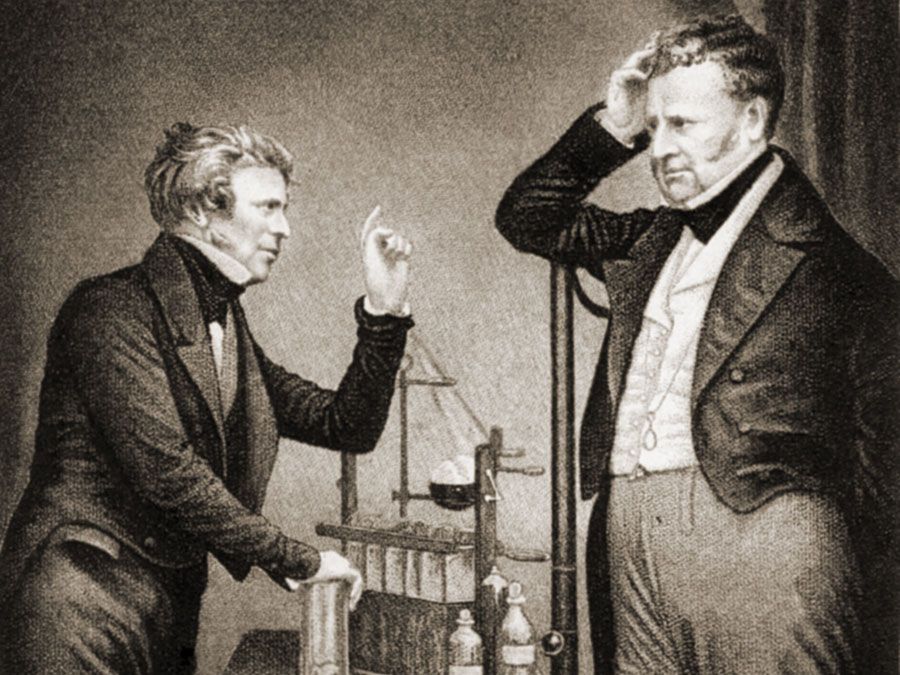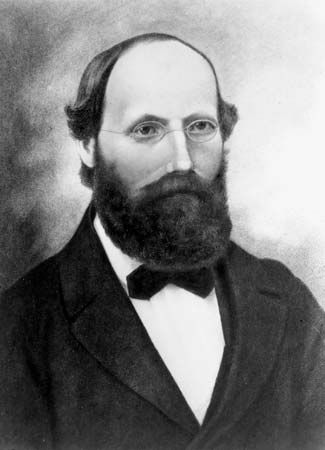Bernhard Riemann
Bernhard Riemann (born September 17, 1826, Breselenz, Hanover [Germany]—died July 20, 1866, Selasca, Italy) was a German mathematician whose profound and novel approaches to the study of geometry laid the mathematical foundation for Albert Einstein’s theory of relativity. He also made important contributions to the theory of functions, complex analysis, and number theory.
Riemann was born into a poor Lutheran pastor’s family, and all his life he was a shy and introverted person. He was fortunate to have a schoolteacher who recognized his rare mathematical ability and lent him advanced books to read, including Adrien-Marie Legendre’s Number Theory (1830). Riemann read the book in a week and then claimed to know it by heart. He went on to study mathematics at the University of Göttingen in 1846–47 and 1849–51 and at the University of Berlin (now the Humboldt University of Berlin) in 1847–49. He then gradually worked his way up the academic profession, through a succession of poorly paid jobs, until he became a full professor in 1859 and gained, for the first time in his life, a measure of financial security. However, in 1862, shortly after his marriage to Elise Koch, Riemann fell seriously ill with tuberculosis. Repeated trips to Italy failed to stem the progress of the disease, and he died in Italy in 1866.
Riemann’s visits to Italy were important for the growth of modern mathematics there; Enrico Betti in particular took up the study of Riemannian ideas. Ill health prevented Riemann from publishing all his work, and some of his best was published only posthumously—e.g., the first edition of Riemann’s Gesammelte mathematische Werke (1876; “Collected Mathematical Works”), edited by Richard Dedekind and Heinrich Weber.

Riemann’s influence was initially less than it might have been. Göttingen was a small university, Riemann was a poor lecturer, and, to make matters worse, several of his best students died young. His few papers are also difficult to read, but his work won the respect of some of the best mathematicians in Germany, including his friend Dedekind and his rival in Berlin, Karl Weierstrass. Other mathematicians were gradually drawn to his papers by their intellectual depth, and in this way he set an agenda for conceptual thinking over ingenious calculation. This emphasis was taken up by Felix Klein and David Hilbert, who later established Göttingen as a world centre for mathematics research, with Carl Gauss and Riemann as its iconic figures.
In his doctoral thesis (1851), Riemann introduced a way of generalizing the study of polynomial equations in two real variables to the case of two complex variables. In the real case a polynomial equation defines a curve in the plane. Because a complex variable z can be thought of as a pair of real variables x + iy (where i = Square root of√−1), an equation involving two complex variables defines a real surface—now known as a Riemann surface—spread out over the plane. In 1851 and in his more widely available paper of 1857, Riemann showed how such surfaces can be classified by a number, later called the genus, that is determined by the maximal number of closed curves that can be drawn on the surface without splitting it into separate pieces. This is one of the first significant uses of topology in mathematics.
In 1854 Riemann presented his ideas on geometry for the official postdoctoral qualification at Göttingen; the elderly Gauss was an examiner and was greatly impressed. Riemann argued that the fundamental ingredients for geometry are a space of points (called today a manifold) and a way of measuring distances along curves in the space. He argued that the space need not be ordinary Euclidean space and that it could have any dimension (he even contemplated spaces of infinite dimension). Nor is it necessary that the surface be drawn in its entirety in three-dimensional space. A few years later this inspired the Italian mathematician Eugenio Beltrami to produce just such a description of non-Euclidean geometry, the first physically plausible alternative to Euclidean geometry. Riemann’s ideas went further and turned out to provide the mathematical foundation for the four-dimensional geometry of space-time in Einstein’s theory of general relativity. It seems that Riemann was led to these ideas partly by his dislike of the concept of action at a distance in contemporary physics and by his wish to endow space with the ability to transmit forces such as electromagnetism and gravitation.
In 1859 Riemann also introduced complex function theory into number theory. He took the zeta function, which had been studied by many previous mathematicians because of its connection to the prime numbers, and showed how to think of it as a complex function. The Riemann zeta function then takes the value zero at the negative even integers (the so-called trivial zeros) and also at points on a certain line (called the critical line). Standard methods in complex function theory, due to Augustin-Louis Cauchy in France and Riemann himself, would give much information about the distribution of prime numbers if it could be shown that all the nontrivial zeros lie on this line—a conjecture known as the Riemann hypothesis. All nontrivial zeros discovered thus far have been on the critical line. In fact, infinitely many zeros have been discovered to lie on this line. Such partial results have been enough to show that the number of prime numbers less than any number x is well approximated by x/ln x. The Riemann hypothesis was one of the 23 problems that Hilbert challenged mathematicians to solve in his famous 1900 address, “The Problems of Mathematics.” Over the years a growing body of mathematical ideas have built upon the assumption that the Riemann hypothesis is true; its proof, or disproof, would have far-reaching consequences and confer instant renown.
Riemann took a novel view of what it means for mathematical objects to exist. He sought general existence proofs, rather than “constructive proofs” that actually produce the objects. He believed that this approach led to conceptual clarity and prevented the mathematician from getting lost in the details, but even some experts disagreed with such nonconstructive proofs. Riemann also studied how functions compare with their trigonometric or Fourier series representation, which led him to refine ideas about discontinuous functions. He showed how complex function theory illuminates the study of minimal surfaces (surfaces of least area that span a given boundary). He was one of the first to study differential equations involving complex variables, and his work led to a profound connection with group theory. He introduced new general methods in the study of partial differential equations and applied them to produce the first major study of shock waves.



















